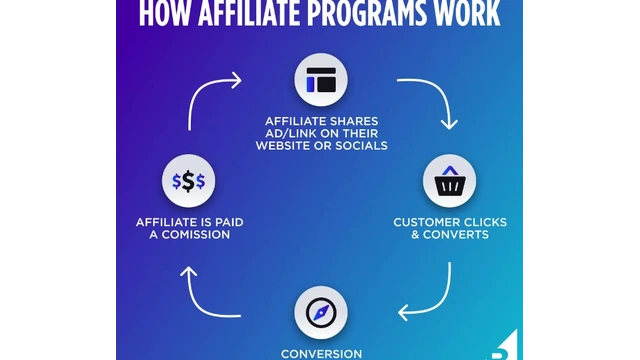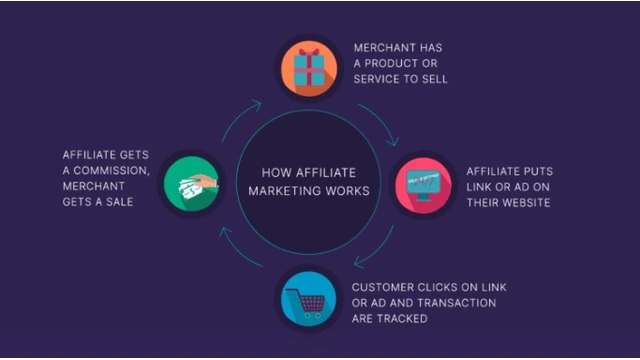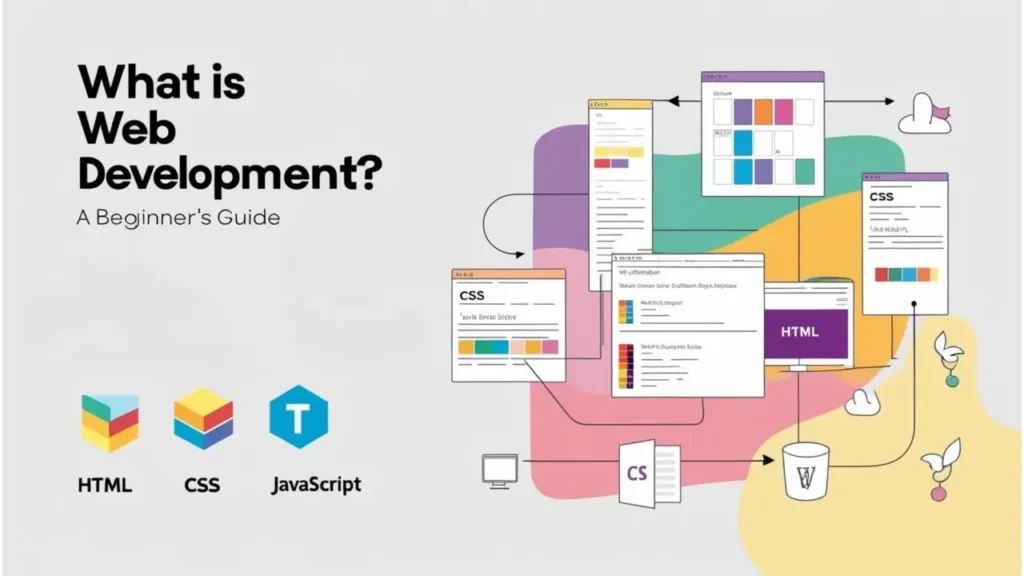Introduction
Imagine a world where each spent on advertising brings guaranteed results—no more paying upfront with fingers crossed. That’s the power of performance marketing. Unlike traditional advertising models, where brands pay regardless of outcomes, performance marketing flips the script by focusing only on measurable results. Whether it’s clicks, leads, or actual sales, performance marketing ensures that businesses only pay for the actions that matter, aligning costs directly with success.
This results-driven approach is transforming digital advertising by providing businesses with a clear path to ROI. Brands can now optimize their spending, ensuring that every dollar invested is directly tied to performance. The concept of paying for results rather than exposure gives advertisers more control over their budgets and outcomes, making it a far more efficient model than traditional advertising.
At the heart of performance marketing lies affiliate marketing. Here, affiliates—such as bloggers, influencers, or other content creators—promote products or services and earn a commission based on the sales or leads they generate. This creates a win-win scenario: brands expand their reach without any upfront fees, while affiliates are rewarded for the value they bring.
In this article, we’ll dive deeper into how affiliate marketing plays a key role in performance marketing and explore the strategies that help businesses thrive and increase returns in today’s competitive digital landscape.
Table of Contents
What is Performance Marketing?
Performance marketing is revolutionizing the way businesses approach advertising. It is a marketing strategy where you only pay when your goals are met, whether it’s a click or conversion. This innovative approach centers on cost-per-action (CPA) and pay-for-performance models, making each dollar spent a strategic investment in results. Unlike traditional marketing, which can often feel like throwing darts in the dark, performance marketing offers a clear path of measurability and accountability, allowing you to tie each campaign directly to ROI.
This strategy provides more than just immediate results; it empowers brands with real-time tracking and insights to understand what works and what doesn’t. You’re able to analyze each component, refine tactics, and continuously optimize for greater efficiency. With performance marketing, you’re not just spending; you’re investing in success with every action. Discover how this dynamic model can propel your business forward, helping you reach your ideal audience and unlock unprecedented growth opportunities! The future of advertising is here, and it’s more targeted and results-driven than ever.

Understanding Affiliate Marketing within Performance Marketing
Affiliate marketing is an effective way to drive sales online, where businesses reward affiliates for generating traffic or sales through a commission-based structure. This means that affiliates earn money by promoting products and services they believe in, resulting in a rewarding experience for both parties. As a vital component of performance marketing, affiliate marketing thrives on measurable outcomes, allowing affiliates to focus on delivering results that directly impact their earnings. What sets affiliate marketing apart from other performance strategies—like influencer partnerships or cost-per-click (CPC) models—is its unique emphasis on individual affiliates driving sales. Each affiliate operates with a direct incentive to reach specific conversion goals, which means brands can expand their reach with minimal risk. This targeted approach not only ensures accountability but also enables businesses to optimize their marketing budget by paying for performance rather than just potential. With the right affiliates in place, brands can tap into niche audiences and trusted networks, maximizing both reach and relevance in the marketplace.

Key Components of Affiliate Marketing in Performance Context
Three essential players collaborate to create impactful results in the world of affiliate marketing: advertisers, affiliates, and networks. Advertisers, often brands seeking to expand their reach, team up with affiliates—creative individuals or organizations that passionately promote products to their audiences through blogs, social media, or other platforms. This partnership thrives with the help of networks, which serve as crucial intermediaries. Networks facilitate connections between advertisers and affiliates, track performance, and ensure affiliates are promptly paid for their successes, streamlining the process and building trust.
But how do we know who drives the results? That’s where cutting-edge tracking and attribution come into play. Utilizing unique links, UTMs, and cookies, the affiliate marketing ecosystem ensures that every click and conversion is accurately recorded, making it easy to track and measure performance. Unique links allow for seamless monitoring of traffic and conversions for each affiliate, while UTMs help analyze campaign performance across multiple channels. Cookies enable the identification of users and their interactions over time, guaranteeing that each affiliate receives proper credit. Together, these components create a powerful framework, providing transparency and measurability that drives impactful results and unlocks the full potential of affiliate marketing!
Common Payment Models in Affiliate and Performance Marketing
Various payment models reward affiliates based on performance, creating a flexible compensation framework that aligns the interests of both advertisers and affiliates.
- Cost Per Sale (CPS) / Cost Per Action (CPA): Advertisers pay affiliates only for actual sales or conversions, making it a low-risk investment by ensuring expenses align directly with measurable results.
- Cost Per Click (CPC) and Cost Per Lead (CPL): These models reward affiliates for driving traffic and generating leads, compensating them for each click or lead, even if no immediate sale occurs, promoting brand visibility and potential future sales.
- Other Structures: Tiered commissions offer affiliates higher payouts as they reach performance milestones, motivating them to achieve better results and giving top-performing affiliates a lucrative incentive to continue scaling their efforts.
Each model allows for a customizable approach that can support specific business goals, fostering long-term partnerships with affiliates.

Benefits of Using Affiliate Marketing within a Performance Marketing Strategy
Integrating affiliate marketing into your performance marketing strategy offers numerous advantages that can drive significant growth. One of the most compelling benefits is cost efficiency. Advertisers only pay affiliates when they deliver measurable results, like clicks, leads, or conversions, which greatly reduces financial risk and ensures that every spend is directly tied to outcomes. This pay-for-performance model means your marketing budget is invested wisely, with expenses directly correlating to successful actions rather than speculative spending.
Moreover, affiliates can broaden your brand’s reach by introducing your products to new, niche audiences, especially in markets that may be difficult to access through traditional advertising. This expansion not only increases sales but also enhances brand awareness, creating a lasting presence in diverse territories.
Additionally, advanced affiliate tracking tools provide transparent performance data, allowing businesses to analyze campaigns effectively and make informed, data-driven decisions. This level of insight allows brands to fine-tune strategies in real-time, maximizing their return on investment (ROI) and achieving more with each campaign. By utilizing affiliate marketing within your performance strategy, you create a powerful synergy that boosts your marketing efforts, strengthens brand reach, and drives substantial growth like never before!

Challenges of Affiliate Marketing in Performance Context
Affiliate marketing is a powerful tool, but it comes with its share of challenges that advertisers need to tackle head-on to maximize its potential. One major hurdle is the tracking and attribution limitations caused by increasing cookie restrictions. As privacy regulations grow, the use of cookies becomes more restricted, making it difficult to measure campaign effectiveness and accurately track conversions. This often leads to data gaps, which can prevent advertisers from fully understanding which affiliates are driving results.
Additionally, fraud poses a significant threat. Click fraud, for instance, is a common issue where fake clicks are generated to inflate performance metrics, wasting the advertiser’s budget. Implementing advanced fraud detection tools and verification methods is essential to safeguard against such activities, ensuring affiliates are genuinely contributing to growth.
Finally, maintaining brand consistency across diverse affiliate channels is crucial yet challenging. With multiple affiliates promoting the same products, there is potential for inconsistent messaging or conflicting branding. This inconsistency can confuse customers and dilute brand identity. Addressing these challenges with proactive strategies and strict brand guidelines is vital for successful affiliate marketing, allowing advertisers to leverage the full potential of their performance-driven campaigns.

Implementing an Affiliate Marketing Program in Performance Marketing
Ready to supercharge your marketing efforts? Implementing an affiliate marketing program within your performance marketing strategy is a powerful way to drive growth and increase revenue. Start by setting clear goals and KPIs; defining specific objectives and metrics gives you a roadmap to measure success and make informed, data-driven decisions. Decide if your goals are centered on sales growth, brand awareness, or lead generation, as these will shape your program’s strategy.
Choosing the right affiliate network or platform is also crucial to success. Look for networks with strong reputations and advanced tracking tools that provide transparency and reliability. A quality platform enables seamless communication, accurate tracking, and timely payments, which are essential for efficient program management and affiliate satisfaction.
After setting the foundation, focus on recruiting and onboarding affiliates who can truly amplify your brand. Seek affiliates who align with your brand’s values and have a relevant audience to promote your products. A thorough onboarding process, complete with brand guidelines and performance expectations, will set clear standards and foster effective collaboration.
By following these steps, you can build a dynamic affiliate marketing program that drives impressive results, fuels growth, and nurtures strong, long-term partnerships that benefit your brand.

Tools and Technology for Affiliate and Performance Marketing
In the dynamic world of affiliate and performance marketing, having the right tools at your fingertips can make all the difference. Popular tracking platforms like PartnerStack and Impact are game-changers, simplifying the management of affiliate programs and providing valuable insights into performance. These networks offer robust tracking capabilities, enabling you to monitor every click and conversion seamlessly. With these tools, you can gain a clear view of how each affiliate is contributing to your campaign’s success and identify areas for improvement.
But that’s just the beginning! The real power lies in analytics. By understanding the performance data, you can refine your strategies to optimize results and maximize ROI. Analytics tools allow you to track and evaluate every aspect of your campaign, from clicks and conversions to affiliate performance and customer behavior. By diving into the numbers, you can spot trends, identify high-performing affiliates, and optimize campaigns to ensure your affiliate partnerships are not just effective but truly impactful.
With the right tools and a keen analytical eye, you can elevate your affiliate marketing efforts, driving sustainable growth and unlocking your brand’s full potential. Embrace technology, integrate it into your strategies, and watch your affiliate program thrive!
Affiliate vs. Performance Marketing: Key Differences and Comparisons
Here’s a comparison and difference overview between Affiliate Marketing and Performance Marketing to clarify how they function within the digital marketing landscape.
| Category | Affiliate Marketing | Performance Marketing |
| Definition | A strategy where affiliates promote a brand’s products/services and earn commissions based on conversions or sales they generate. | An overarching marketing model where advertisers pay only when specific, measurable outcomes (like clicks, leads, or sales) occur. |
| Focus | Focuses on a partnership between brands and affiliates who are incentivized by commissions for promoting products and services. | Encompasses various pay-for-performance strategies, including affiliates, pay-per-click (PPC), and social media campaigns. |
| Key Components | Includes advertisers, affiliates, and affiliate networks to track and manage relationships and commissions. | Broader elements include advertisers, multiple marketing channels (e.g., PPC, influencer marketing), and tracking tools. |
| Payment Models | Primarily uses Cost Per Sale (CPS) and Cost Per Action (CPA) models; can include tiered commissions. | Utilizes models like Cost Per Click (CPC), Cost Per Lead (CPL), and CPA for versatile pay-for-performance options |
| Benefits | Offers cost efficiency, expanded reach through affiliates, and pays only when results are achieved. | Provides accountability and budget efficiency by directly tying spend to measurable outcomes across multiple channels. |
| Challenges | Tracking limitations (cookie restrictions), fraud prevention (e.g., click fraud), and ensuring brand consistency. | Varies by channel, with common issues like fraud prevention, accurate attribution, and tracking limitations across networks. |
| Implementation | It requires setting KPIs, selecting a platform, and recruiting affiliates that align with brand values. | It involves selecting the right channels, setting up tracking, and optimizing for each pay-for-performance strategy. |
| Tools & Technology | Popular tools: PartnerStack, Impact, and other affiliate networks for tracking and analytics. | Combines various tools like affiliate platforms, PPC tracking tools, and performance analytics platforms for full campaign insights. |
| Future Trends | AI-driven tracking, advanced personalization in affiliate content, and more accurate fraud detection. | Broader trends in automation, AI-based insights, and deeper personalization for more targeted, effective campaigns. |
FAQ
What is performance marketing, and how does it work?
Performance marketing is a results-driven approach where advertisers pay only when specific actions, like sales, clicks, or conversions, are achieved. This model makes it highly cost-effective, as businesses only pay for measurable outcomes. Digital tracking tools allow advertisers to measure, optimize, and fine-tune each campaign for greater impact, ensuring maximum return on investment (ROI).
How does affiliate marketing fit into performance marketing?
Affiliate marketing is a key component of performance marketing where affiliates promote a brand’s products or services and earn commissions based on measurable results like sales, clicks, or leads generated through their marketing efforts and referrals.
What are the key components of affiliate marketing?
The key components of affiliate marketing include advertisers, affiliates, and networks. Affiliates promote products, driving traffic or sales, while networks track performance, ensuring affiliates earn commissions based on measurable results.
What are common payment models in affiliate and performance marketing?
Common payment models in affiliate and performance marketing include Cost Per Sale (CPS), Cost Per Action (CPA), Cost Per Click (CPC), and Cost Per Lead (CPL). These reward affiliates based on actions like sales, clicks, or leads.
What are the benefits of using affiliate marketing in performance marketing?
Affiliate marketing in performance marketing offers cost efficiency, broader reach, and better tracking. It allows businesses to pay only for results, improves brand awareness, and provides real-time data to optimize campaigns and maximize return on investment.
What are the challenges of affiliate marketing in a performance marketing strategy?
Challenges in affiliate marketing include tracking limitations due to cookie restrictions, potential click fraud, and ensuring brand consistency across multiple affiliates. Addressing these issues is key to maintaining effective and trustworthy affiliate partnerships.
How do you implement an effective affiliate marketing program?
To implement an effective affiliate marketing program, set clear goals, choose the right affiliate network, recruit reliable affiliates, provide strong onboarding, and continuously monitor performance. Optimize strategies based on data to maximize results and build long-term relationships.
What tools are essential for affiliate and performance marketing success?
Popular tools include tracking platforms like PartnerStack and Impact for monitoring affiliate activity, along with analytics software for tracking performance, refining strategies, and maximizing ROI.
What are the future trends in affiliate and performance marketing?
Emerging trends like AI-driven tracking, advanced personalization, and enhanced fraud detection are transforming affiliate marketing. Discover how these innovations can help you stay ahead of the competition and maximize your results.
Conclusion
In summary, affiliate marketing within a performance marketing framework is a game-changer for brands looking to achieve cost-effective, measurable growth. By only paying for successful actions—like sales, leads, or clicks—brands can maximize their marketing budget, gaining greater control over spending. This model offers flexibility in expanding reach through trusted affiliates who promote products to their audiences, often with more credibility and influence than traditional advertising alone. When combined with clear goal-setting and the right tools, affiliate marketing becomes a powerful strategy for creating partnerships that drive significant, measurable results.
Looking ahead, exciting trends such as AI-driven tracking and advanced personalization are set to enhance affiliate strategies even further. With AI, brands can gain deeper insights into customer behavior, allowing them to optimize affiliate campaigns in real time and target the right audience segments. Personalization techniques will enable affiliates to create highly tailored messages that resonate more strongly with individual consumers, increasing conversion rates and brand loyalty.
Now is the ideal moment to explore affiliate opportunities or implement a performance-based approach for your brand. Embrace the transformative potential of affiliate marketing to not only reach new markets but also to increase ROI, build meaningful partnerships, and fuel sustainable business growth. Tap into the power of affiliate marketing and witness your business flourish!












